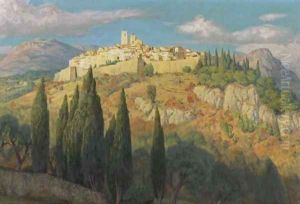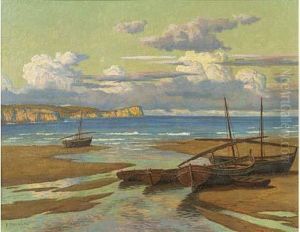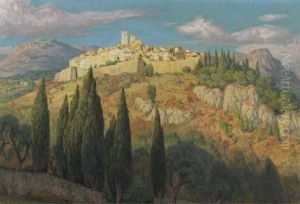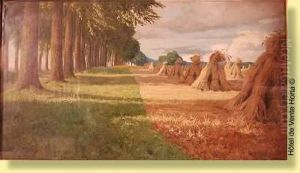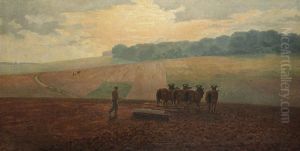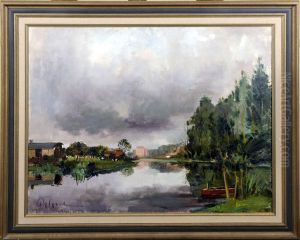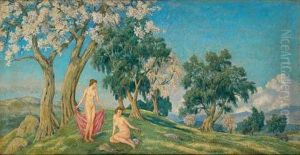Francois-Joseph Dehaspe Paintings
Francois-Joseph Dehaspe was a Belgian painter, born in 1750 in Liège, which was then part of the Prince-Bishopric of Liège, a sovereign ecclesiastical principality of the Holy Roman Empire, and today is part of Belgium. Dehaspe's artistic journey began in an era marked by the Rococo style, yet his work transitioned through various styles reflective of the turbulent times he lived in, including Neoclassicism and Romanticism. His life spanned a period of significant historical upheaval, including the French Revolution and the Napoleonic Wars, events that influenced the themes and styles of his art.
Dehaspe received his early training in Liège, a city with a rich artistic heritage, before continuing his studies in Paris. In Paris, he was exposed to the leading artistic trends of the time and the works of contemporary masters, which significantly influenced his development as an artist. His early works were characterized by the intricate detail and lightness of Rococo, but as his style evolved, it became more aligned with the Neoclassical ideals of simplicity, clarity, and harmony. This shift reflected the broader changes in European art of the time, as artists moved away from the ornate to embrace the ideals of the Enlightenment.
Throughout his career, Dehaspe was known for his historical paintings, portraits, and religious works. His ability to adapt his style made him a versatile artist, capable of capturing the essence of his subjects with sensitivity and depth. Despite the political and social upheavals of his time, Dehaspe managed to maintain a successful career, receiving commissions from both religious institutions and members of the emerging bourgeoisie.
Dehaspe's contributions to art were recognized in his time, and he was a respected member of the artistic community in Liège and beyond. His works were exhibited in various salons, and he was involved in the artistic life of the city, contributing to the development of the arts in the region. After his death in 1833, Dehaspe's legacy continued through his influence on younger artists and his contributions to the cultural heritage of Liège and Belgium. Today, his works can be found in museums and collections, serving as a testament to his skill and the pivotal period in European art history that he navigated with adaptability and insight.
